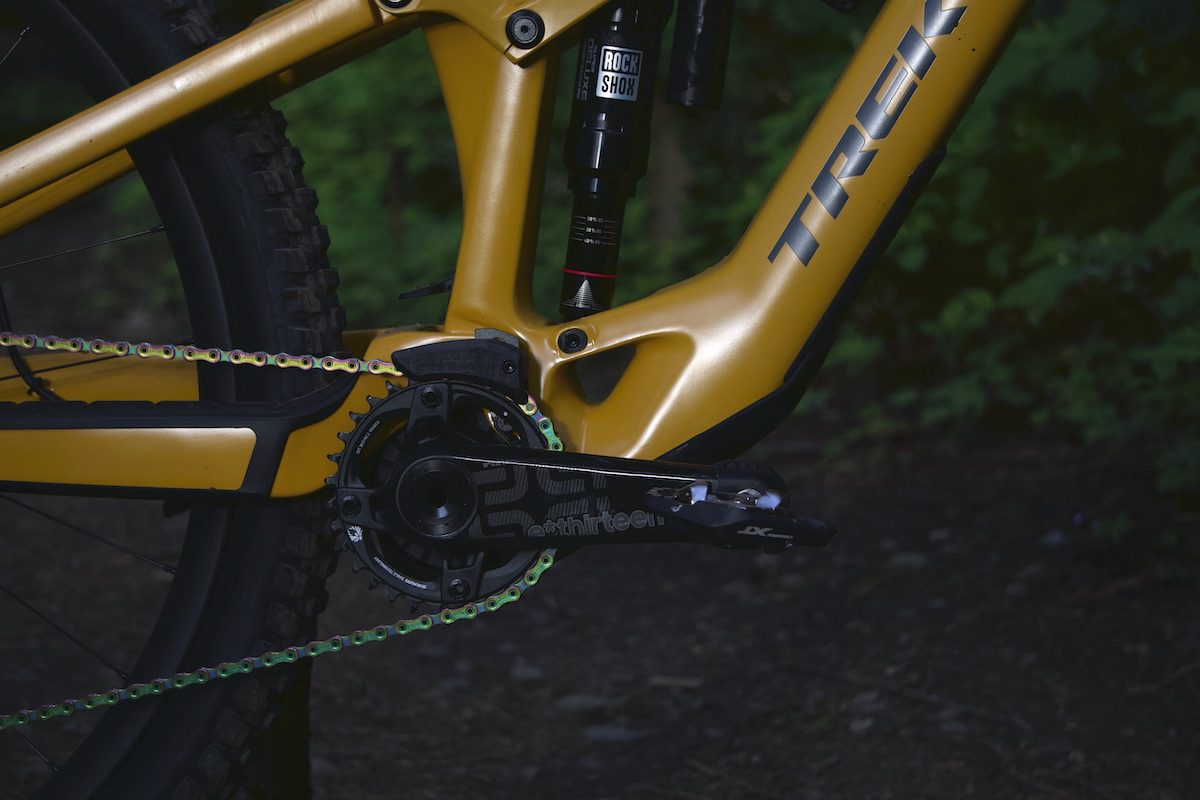2023 mountain bike trends to watch
What to expect from new bikes this year
 Photo by:
Trek's EX-e looks so close to a normal bike
Photo by:
Trek's EX-e looks so close to a normal bike
Mountain bikes are always evolving but that progress is not always linear. In the endless search for a better bike, there are all kinds of side roads, diversions and good ideas on paper that didn’t quite pan out in the real world. These days, marketing copy promising “revolutionary change” is generally going to refer to an eMTB, while regular mountain bikes inch forward in more incremental improvements.
So, where is mountain bike design headed in 2023? Here are a few directions we see bikes moving.
“Clean” designs and integration
This ball was already rolling in 2022, but it’s just picking up speed. More bikes showed up with concealed shocks, integrated dropper posts, bar-stem combos and headset cable routing. Who knew headset cable routing would catch on? Why is this happening? Well, road biking borrowed heavily from mountain bike technology over the last decade (disc brakes, gravel suspension, etc.). Now it is mountain bike design following road bike trends. Road is seeing tech like lights and computers integrated. Who knows what direction mountain bikes will go in.
The upside is that bikes look really clean when you hide the cables in the frame. Downsides include much more complicated servicing and, often, higher costs.
The return of good affordable bikes?
Mountain bikes are getting expensive. Really expensive. But they don’t have to be. Norco’s Fluid FS showed you can make a really good bike for a reasonable price. It’s not the only affordable performance bike out there but with the attention that bike received we think (and really hope) more brands will follow suit with similar bikes of their own.
More stratospheric prices
The flip side is that top-end bikes are still – somehow – getting more expensive. Scott, for example, just released an astronomically rich USD 14,000 Scale, which is just a hardtail cross country bike. Integration is expensive, especially when it requires high-tech electronic suspension parts. And, as all kinds of components look for a way to set themselves apart by doing something flashy and “new,” each part on the bike gets more expensive.
This doesn’t just have an effect on top-end bikes, either. Those prices get normalized and can drag up mid-range prices. When SRAM releases GX AXS it referred to the wireless drivetrain as a more affordable “entry point to the future” (to quote the GX AXS landing page). A quick check of some online retailers and the “entry point” is currently $800-900, and that’s just for the derailleur, shifter, battery and charger. Not to pick on SRAM, because this sort of trend is happening at every part of the bike, but when a third-tier workhorse drivetrain pushes well past $1,000, the price for a complete bike is going to go up.
Longer and wider dropper posts
While ever-changing standards appear to have settled down in mountain biking there is one new one that is gaining traction, and for good reason. That’s wider diameter 34.0-mm dropper posts. As dropper post travel gets longer (a 150-mm post might have been considered long a couple years ago is now short compared to the 240-mm posts out there), the wider standard goes a long way toward improving performance and durability.
34.0 won’t likely catch on across all bikes, it’s excessive for an XC race bike that won’t see a 200-mm drop post, meaning we’re likely going to be stuck with two dropper post standards. But, for us lanky folk, that’s worth it to have a long-travel post that won’t creak or wiggle within weeks of installation.

The future of eMTB
The biggest changes coming down the pipes are in electric mountain bike design. Brands are still super-keen on pushing out newer, better ebikes and that is not likely to go away any time soon. The benefit is that the bikes are getting better. Like, way better.
eMTB gets specific
For years, most bike brands have worked to have an eMTB. Bikes were heavy, so it made sense that most of these eMTB were longer-travel trail or enduro bikes where the weight was less of an issue. Going forward, just having an eMTB won’t be enough. As technology improves, brands are narrowing down the intended use of their electric bikes to better mimic their regular bikes. Lightweight motors and smaller batteries make it possible to create bikes like Trek’s EX-e or even proper e-cross country bikes.
Lightweight eMTB will get interesting
The lightweight eMTB explosion kicked off in 2022, with the aforementioned EX-e from Trek squaring off against the existing Specialized Levo SL, Orbea Rise and Scott Lumen eRide. This enabled brands to create discipline-specific eMTB. But it also forces brands to make a choice in how they balance torque, battery and weight. Before, the “more is better” approach generally held up. Now, with lightweight eMTB offering significantly better ride quality for shorter-travel bikes, how brands choose to balance power, weight and battery life will get interesting. Do you want a really light bike with minimal power? Or a light bike with full power that burns through battery faster? Or a mid-weight bike that balances power and ride time? As eMTB technology improves, the designs will get more interesting, more competitive – and maybe more appealing to eMTB holdouts. But it definitely is not getting less expensive.






